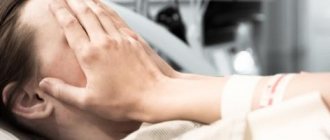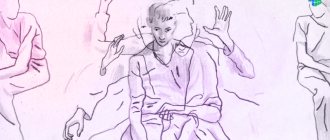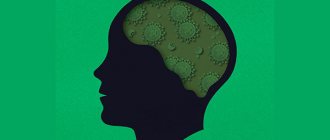Urticaria is a group of diseases (mainly of an allergic nature), the characteristic symptom of which is a rash on the skin in the form of red blisters.
In Russia, urticaria is very common - from 10 to 20% of the population have experienced its manifestations at least once in their lives. Moreover, in the majority it occurs in an acute form (70-75%), in the rest it takes a chronic course. WHO (World Health Organization) predicts that the 21st century will be the century of allergies. Every year the number of patients with one form of allergy or another increases by 5%.
Symptoms and mechanisms of development of urticaria
The appearance of the main symptoms of urticaria - blisters and redness - is associated with the mechanism of development of the disease. This is an increase in vascular permeability and acute swelling in the tissues that surround the vessels.
The mast cell plays a leading role in the development of urticaria. These are special immune cells, the granules of which contain special biologically active substances (mediators). The most studied of them is histamine. It is because of its action that the symptoms of urticaria arise - rashes, redness, swelling, itching.
A blistering rash appears suddenly on any part of the body, disappears quickly and without a trace within 24 hours, and then appears elsewhere. When you press on the center of the redness, a white spot is visible.
The itching begins at the same time as the rash. This is how histamine acts on nerve endings.
Depending on the factor that activated the release of histamine from mast cell granules, different types of urticaria are distinguished.
In children with urticaria, there may be a deterioration in their general condition: increased body temperature, disruption of the digestive system (diarrhea).
Frequently asked questions
Is it true that if a person has been in a state of nervous tension for a long time, he becomes more susceptible to various diseases? Can a nervous condition lead to illness?
Doctors' observations say that an initially mentally and physically healthy person is able to endure prolonged or severe stress without subsequent complications in the form of illnesses.
But if the body already has its own “weak points” in the form of a predisposition to diseases, disorders in the early (not yet identified) stages, or is weakened by a disease, then overstrain of the nervous system can trigger a whole cascade of ailments. Frequent examples of such developments are the formation of hypertension, weight loss or gain after stressful events.
Is it true that all “diseases are from nerves”?
Many diseases have causes and mechanisms of development in the form of disorders of the nervous system and psyche. But it is not correct to say that “all diseases are from nerves.” There are other causes for diseases: genetic defects, infections and poisonings, injuries, there are many disorders with an undetected etiology.
Can internal diseases cause mental disorders?
Yes. Body and psyche are connected. A significant part of diseases of internal organs can contribute to behavioral disorders and lead to mental illness.
For example, atherosclerosis and hypertension, if left untreated and progressing, will cause encephalopathy and psychoorganic syndrome (decreased memory, intelligence, emotional instability). Insufficiency of the thyroid gland leads to a decrease in intellectual capabilities.
Types of urticaria
There are several classifications of urticaria.
1. By time:
- acute – lasts up to 6 weeks;
- chronic – more than 6 weeks.
2. By nature:
- allergic (immune) - realized through the development of an immune reaction, often combined with other allergic diseases (bronchial asthma, rhinitis, conjunctivitis, dermatitis, etc.);
- non-allergic - through the direct release of histamine.
3. Due to:
— allergic urticaria
may cause:
- Food;
- taking medications;
- insect allergens (insect allergy);
- pollen allergens.
— non-allergic
form of the disease occurs due to a direct effect on the mast cell:
- physical factors - such as cold, heat, ultraviolet radiation, radiation, vibration, compression;
- chemical (provoking factors are solvents, acids, alkalis and other chemicals);
- certain medicines, such as aspirin;
- infectious agents - viruses (adenoviruses, Epstein-Bar virus, enteroviruses), streptococci, helminths, Helicobacter pylori;
- for systemic and other chronic diseases (rheumatoid arthritis, systemic lupus erythematosus);
- with a sharp increase in the level of histamine and other active substances in the blood due to the large consumption of foods high in them: eggplants, canned food, nuts, bananas, chocolate and others.
Hereditary, psychogenic, and idiopathic urticaria (this is the name for a disease whose cause has not been established) is also possible.
The wide variety of factors and similar developmental mechanisms of individual species make it difficult to find the cause. Most often, this requires the help of a specialist.
Symptoms of intercostal neurosis
Only a doctor can make a correct diagnosis after a complete examination of the body. However, characteristic symptoms that will help you recognize intercostal neurosis yourself are:
- voluntary twitching muscles;
- pain between the ribs, in the area of the shoulder blades and lower back;
- discomfort when coughing, sneezing and sudden movements. The pain may be sharp, dull or aching;
- numbness at the site of damage to nerve fibers;
- During palpation of the ribs, sternum and lumbar region, pain may intensify.
Neurosis of the ribs is similar in symptoms to diseases of the heart, stomach and lungs. But the main distinguishing symptom of this disease is constant aching pain, which can intensify with sudden movements, palpation, sneezing or coughing. No painkiller can relieve these painful sensations.
When and which doctor to contact
Usually a doctor is consulted:
- if the rash spreads over a large area;
- when symptoms increase;
- when signs of general intoxication occur;
- if the urticaria does not go away on its own after eliminating the factor that caused it;
- if the disease becomes chronic or often recurs,
It is advisable not to delay your visit to the doctor and come when the first manifestations of the disease occur. Then it will be easier to establish the cause, and treatment will take less time. In addition, the doctor will recommend what to do to prevent hives.
A therapist or pediatrician, a dermatologist can provide assistance with urticaria, and an allergist is involved in targeted diagnosis and treatment.
Diagnosis of urticaria in children
A preliminary diagnosis is made by the doctor after an initial examination of the skin.
The doctor knows exactly what urticaria looks like in a child, so he will not confuse it with manifestations of other diseases. For allergies, the following tests are prescribed:
- general blood test to exclude immune and inflammatory processes;
- allergy tests to identify the allergen.
In some situations, a biochemical blood test and examination for helminthic and parasitic diseases are performed. If necessary, a thyroid examination is prescribed to identify hyper- and hypothyroidism.
Diagnostic procedures for urticaria
Diagnosis of acute urticaria is usually quite simple. An examination and questioning of the patient about his medical history is sufficient. Finding out the reason is not so easy, and for this purpose additional research is carried out:
1. Laboratory tests:
- general blood and urine analysis;
- blood biochemistry (liver tests - ALT, AST, bilirubin, rheumatic tests, blood glucose);
- stool examination (coprogram);
- bacterial cultures from the nasal and pharyngeal mucosa.
2. Instrumental research:
- chest x-ray;
- Ultrasound of the abdominal organs;
- endoscopic examinations of the upper and lower gastrointestinal tract (gastroscopy, colonoscopy).
3. Allergy tests:
- intradermal tests with allergens;
- cold and heat tests;
- physical stress tests, line drawing, tourniquet application.
4. Immunological methods.
5. Consultations of related specialists:
- gastroenterologist;
- endocrinologist;
- rheumatologist;
- gynecologist and others as necessary.
First of all, it is important for a specialist to establish what nature the urticaria is – allergic or non-allergic. In the allergic form, one can clearly trace the connection between the symptoms and the introduction of the allergen. It is confirmed by skin, allergy and immunological tests.
Forecast and prevention of urticaria
Hives usually go away over time. However, it is impossible to predict how long this problem will persist. In many cases, the disease can be controlled by avoiding trigger substances and taking antihistamines.
Prevention methods include diet control and avoidance of contact with volatile and food allergens. You should wear loose clothing made from natural fabrics and not cause stress in your child. It is unacceptable to neglect chronic diseases.
Before treating hives in a child, you should consult your doctor. Contact a pediatrician or allergist at the RebenOK clinic in Moscow. We employ specialists with extensive practical experience. Thanks to modern equipment, it is possible to quickly diagnose and, based on the results obtained, prescribe effective therapy.
Diagnosis of sun allergy
If you notice an unusual reaction to the sun, I recommend contacting an allergist or dermatologist, who will prescribe you a certain range of analyzes and tests that can be used to confirm the presence of an allergy or a predisposition to it.
It is impossible to fight a disease without eliminating its causes, so be prepared to be offered a comprehensive examination:
- skin tests (scarification tests, prick tests, patch tests). Skin allergy tests are the fastest, safest and most reliable method of examination in immunology. Testing is carried out for patients from 5 to 50 years old;
- determination of the level of total immunoglobulin E;
- determination of the level of specific immunoglobulin E to household, epidermal, pollen, fungal, food, medicinal and bacterial allergens, as well as insect poison;
- determination of the level of specific immunoglobulins to food antigens - diagnosis of food intolerance;
- examination of sputum and secretions from the nasal cavity.
Symptoms of phlebitis
In acute and chronic phlebitis of the superficial veins, the inflamed vein is tense and painful. The skin on the leg is tight, hot and red. Red stripes appear along the vein.
With acute and chronic phlebitis of the deep veins, the patient's temperature rises. The skin over the damaged area becomes thin and red. A red stripe appears along the inflamed vessel. The limb swells and hurts. The patient feels weak in the body.
Cerebral phlebitis is an inflammation of blood vessels leading to the destruction of venous walls. Characterized by weakness, high blood pressure, dizziness, prolonged and frequent headaches. The inflamed area becomes numb.
Pylephlebitis is a purulent inflammatory process in the veins. The disease is indicated by: weakness, prolonged fatigue, fever with chills, abdominal pain, vomiting, headache, poor appetite and insomnia. The symptoms are similar to a cold. Sometimes pylephlebitis provokes bleeding from the stomach or intestines. Therefore, if you feel that the symptoms are not typical of a cold, then contact a phlebologist for an examination.
Manifestation of heart neurosis
Symptoms of the disorder:
- Insomnia ; - Shortness of breath even in the absence of physical activity; - Pain in the heart area; - Increased sweating; - The emergence of panic fear of possible death due to cardiac arrest.
Apparent heart pain will change in the nature of its manifestation. At one moment there will be sensations of squeezing and squeezing, and at another moment there will be sharp colic on the left side of the body. Often people with cardiac neurosis report that they feel cardiac arrest for some time. Of course, this is a somatic sensation that has nothing to do with reality.
It is almost impossible to solve this problem without contacting specialized psychiatrists. Sooner or later, a person experiences panic attacks, stops getting enough sleep, and tries to find a solution to the problem by self-medicating or turning to healers and magicians. All this poses a danger to the mental state.










